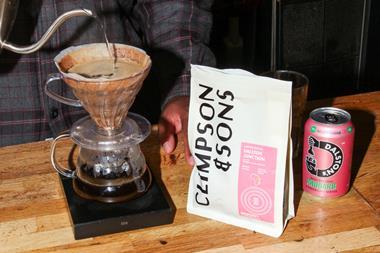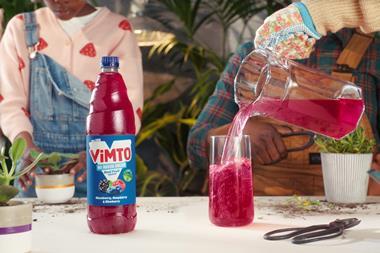A surplus of wine may be good for consumers in that it helps keep prices low, but it exerts a lot of pressure on producers in certain areas. The drive to shed surplus hots up at Christmas
A wine glut may be good news for consumers this Christmas, but it’s an issue that looks set to be a thorn in the side of the industry for many years to come.
Opinion is strongly divided as to the surplus’s impact on price and quality. However, research by the International Wines and Spirits Record (IWSR) for Vinexpo shows discounting pressures are likely to remain intense as wine surplus reaches an estimated 31 billion hectolitres, or 11.3% of world production, by 2008. This is a slight fall from 11.9% of production in 2000.
The drive to shed some of this surplus hots up at Christmas, with the UK increasingly one of the most important international sales battlegrounds.
The IWSR research predicts Britain will show the biggest increase in wine consumption in volume and value by 2008, with retail value growing 19% to £6bn, taking high duty rates into account. That will make the UK the second largest wine market in value terms
after the US and the fifth biggest in terms of volume.
Wine surplus will continue to keep prices low and put pressure on smaller producers that can’t compete with the big brands on price, according to IWSR chairman Val Smith.
He says France, Italy, Spain and Australia are in particular struggling with a glut. Stuck with millions of bottles they cannot sell in a toughening global market, French producers hit the headlines this year for applying for EU subsidies to distil vast quantities of wine into industrial alcohol.
“What happens to the surplus will depend on how fast new markets emerge,” he says. “If there is a real explosion in wine demand in China, as predicted, this will help reduce the surplus.
“Wine quality is improving all the time, so for the consumer it’s good news because they are paying less. But for producers, for example in an area such as Bordeaux, it will continue to exert a lot of pressure. They will either have to uproot stocks, try and trade up or get squeezed into larger units and brands.”
Smith adds: “Over the next decade, the surplus will strengthen the current trend towards bigger production units and will keep the price in most markets down.”
Paul Sullivan, marketing manager at Western Wines, says the surplus has impacted negatively on smaller producing countries. “To some extent the oversupply of wine is a great thing for the consumer,” he says. “However, it is not a blanket offering and countries such as South Africa and New Zealand are not in surplus. This has a negative impact on them as they have to compete for promotions and shelf space.”
Critics fear over-production will lead to the dominance of discounted brands that will further commoditise wine.
A wine glut may be good news for consumers this Christmas, but it’s an issue that looks set to be a thorn in the side of the industry for many years to come.
Opinion is strongly divided as to the surplus’s impact on price and quality. However, research by the International Wines and Spirits Record (IWSR) for Vinexpo shows discounting pressures are likely to remain intense as wine surplus reaches an estimated 31 billion hectolitres, or 11.3% of world production, by 2008. This is a slight fall from 11.9% of production in 2000.
The drive to shed some of this surplus hots up at Christmas, with the UK increasingly one of the most important international sales battlegrounds.
The IWSR research predicts Britain will show the biggest increase in wine consumption in volume and value by 2008, with retail value growing 19% to £6bn, taking high duty rates into account. That will make the UK the second largest wine market in value terms
after the US and the fifth biggest in terms of volume.
Wine surplus will continue to keep prices low and put pressure on smaller producers that can’t compete with the big brands on price, according to IWSR chairman Val Smith.
He says France, Italy, Spain and Australia are in particular struggling with a glut. Stuck with millions of bottles they cannot sell in a toughening global market, French producers hit the headlines this year for applying for EU subsidies to distil vast quantities of wine into industrial alcohol.
“What happens to the surplus will depend on how fast new markets emerge,” he says. “If there is a real explosion in wine demand in China, as predicted, this will help reduce the surplus.
“Wine quality is improving all the time, so for the consumer it’s good news because they are paying less. But for producers, for example in an area such as Bordeaux, it will continue to exert a lot of pressure. They will either have to uproot stocks, try and trade up or get squeezed into larger units and brands.”
Smith adds: “Over the next decade, the surplus will strengthen the current trend towards bigger production units and will keep the price in most markets down.”
Paul Sullivan, marketing manager at Western Wines, says the surplus has impacted negatively on smaller producing countries. “To some extent the oversupply of wine is a great thing for the consumer,” he says. “However, it is not a blanket offering and countries such as South Africa and New Zealand are not in surplus. This has a negative impact on them as they have to compete for promotions and shelf space.”
Critics fear over-production will lead to the dominance of discounted brands that will further commoditise wine.



















No comments yet